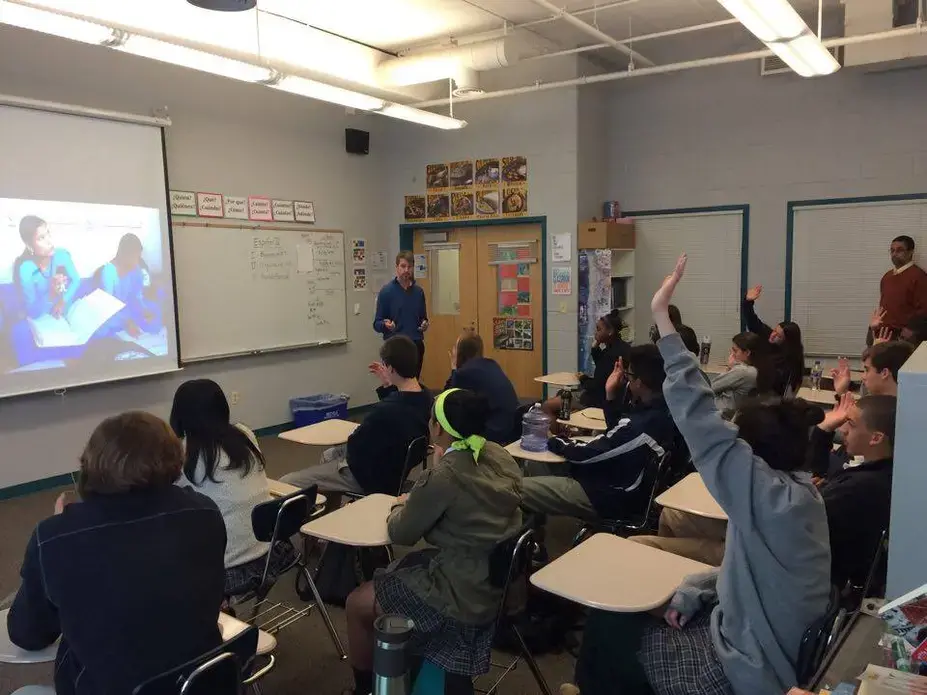"These global health issues can seem far away and foreign to us...Raise your hand if you have ever donated to a charity?" Rob Tinworth, filmmaker of "The Life Equation," asks students. Every hand in the classroom goes up. "We all have that in common, and we often choose where to donate our money because we are personally connected to those causes," he says. In March, 2016, Tinworth brought big data to classrooms in DC, Maryland and Virginia, and together he and students worked through tough questions about the future of global health funding.
Tinworth spent four years reporting on people impacted by donated healthcare in Guatemala and Nepal. "The Life Equation" project balances the human perspective with big data's influence on healthcare equity around the world.
The filmmaker's class presentations incorporated an interactive feature: live polling of the audience that allowed participants to vote on what should be done with specific funds. The special report for the PBS NewsHour created by Tinworth and Miles O'Brien poses similar questions as it looks at the calculus that could help determine the most productive ways to spend health care dollars. "The Life Equation" interactive went live on April 9, 2016.
Starting a week of class visits at George Washington University, Tinworth presented his interactive documentary using the Pulitzer Center Lesson Builder education tool to communicate a global health lesson to non-academics. Ron Waldman, Professor of Global Health at the Milken Institute School of Public Health, called Tinworth's interactive presentation the most engaging and important presentation of the "big data health debate" he'd seen.
With the Spanish IV classes at Bullis High School in Maryland, Tinworth first captured the students' interest with stories of a Guatemalan family impacted by donated healthcare dollars and then discussed the status of healthcare in the States.
Tinworth gave journalism students at Wakefield High School his tips of the trade for conducting video interviews. "Build trust with the subject by asking questions before you record. And be honest about why you are interviewing them." He taught the newspaper team how to shape open-ended questions that allow room for elaboration. "At the end of your interview, always ask: 'Is there anything else you want to discuss with me?' The most important part of the story could be in that final response. Be flexible."
Students at Georgetown Day School voiced a reaction that was echoed throughout the week: "While there's not a concrete solution, we need to get more people involved, especially with so many untapped resources around us," said one student before suggesting the school host a full-day campus event for students to come up with solutions.
In a multimedia class studying storytelling, Tinworth focused on the tools used in making documentaries: "People respond to images and stories. If you want to use statistics, write a report; if you want to communicate with people in film, tell a story. What you leave out of the story is just as important as what you include."
Following a high school assembly at Washington International School, students discussed the balance that can be made between data-driven donation choices and donations made after seeing stories of individuals who have been impacted by medical care. Students debated the value of data in choosing which healthcare solutions would save more disability-averted life years. Meanwhile teachers of "Theory of Knowledge" and other classes look forward to spending more time with Tinworth's interactive documentary. "The big data in the life equation can transform the lives of one billion people who don't have access to healthcare. But in all of this data, who gets lost in the calculation?"
















